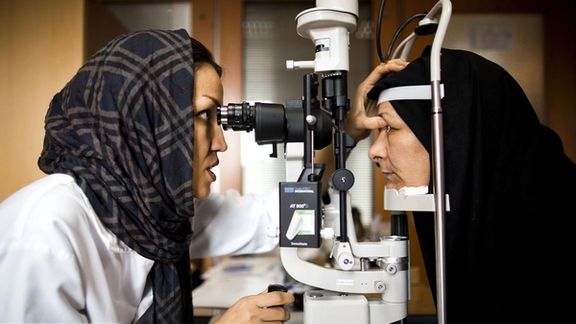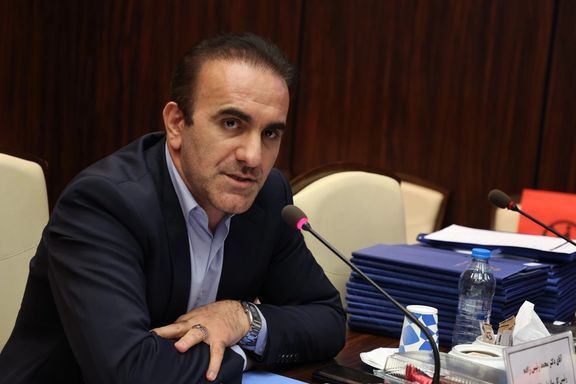We Cannot Refuse To Treat Women Over Hijab Issues: Doctors' Chief

Iran’s Medical Council says no doctor has the right to refuse to accept and examine a patient over hijab issues.

Iran’s Medical Council says no doctor has the right to refuse to accept and examine a patient over hijab issues.
However, the head of Medical Council, Mohammad Rais-Zadeh, said Sunday that no hijab-related case has been sent to the council so far.
The ruling follows reports of a doctor refusing to accept a veiled patient in the northeastern city of Mashhad.
In February, a medical office in the northeastern Iranian city of Kashmar was shut when a doctor there objected to a woman harassing a patient over her “improper clothing”.
Earlier in February, Iran’s Health Minister Bahram Einollahi said violation of hijab regulations is considered a crime at hospitals and if they do not abide by hijab regulations, they will not receive approval to operate. He added that public hospitals have been required to comply with the hijab law and provide services to women by female staff.
“Women's ultrasound should be performed by women, and in some cases that we do not have enough radiologists, we ask female general practitioners and gynecologists to be given short-term training,” underlined the minister.
The clerical regime continues to strictly enforce the "mandatory hijab", despite the mass protests that followed the death in custody last September of 22-year-old Mahsa Amini, who had been arrested by the morality police for defying modesty rules.
About a month before the death of Mahsa Amini, the so-called morality police had started patrolling medical and academic centers in Iran’s northeastern city of Mashhad to enforce compliance with the Islamic dress code. Social media users earlier reported the presence of teams from what the Islamic Republic calls the ‘Enjoining right and forbidding vice headquarters’ in various wards of hospitals and medical centers in other cities, with some reports of pressures on hospitals to separate male and female patients admitted to the ICU.
The uprising has made it increasingly difficult for the clerical regime to enforce the mandatory Islamic dress code. Appearing in public without a full veil has become a common sight even in small and more conservative towns. Since the beginning of the ‘Women, Life, Liberty’ movement in September last year, thousands of girls and women have set fire to their headscarves in a symbolic move and voiced opposition to compulsory hijab.

Rais-Zadeh also voiced his concern over the low income of doctors and surgeons, saying current wages mean no one would study for many years to qualify.
Iran’s medical profession is facing a crisis as more and more doctors leave the country for better wages and working conditions.
Driven by economic and professional problems, as well as lack of social and political freedoms, an increasing number of Iran's healthcare professionals emigrate.
There are no transparent data on the emigration of healthcare and other professionals, but medical officials and lawmakers often offer fragmentary information on the scope of the problem. The number of doctors emigrating has more than doubled in the past decade, according to one report.
Thousands of physicians, dentists, midwives, and nurses have either emigrated in the past few years or are planning to leave for other countries. Many in Iran, including lawmakers, have repeatedly warned that the ever-increasing desire of healthcare professionals to leave will result in the deterioration of the country’s healthcare system.
In February, Mohammad Sharifi-Moghadam, a member of the central council of Iran's Nurses’ Organization, said between 2,500 to 3,000 nurses were emigrating from Iran each year, based on the number of requests for good standing certificates, confirming that the applicant is entitled to practice medicine in the country.
The average salary for a doctor in Iran is about $400 per month, against ten as much or more in the US and UK. Physicians and other health professionals’ maximum fees as well as private hospitals’ tariffs are set and announced by the government annually.
Mohammad-Ali Mohseni-Bandpey, a member of the parliament health committee, said last year that wrong government policies affecting doctors included ignoring their needs and demands and refusing to allow them to raise their fees despite higher costs of living and running their practices. According to Mohseni-Bandpey, despite an almost 50 percent annual inflation rate, the government is trying to prevent a similar increase in doctors’ fees, to keep healthcare costs down. He suggested that the government should allow them to increase their fees but shift the burden to insurance companies rather than patients.
Doctors in Iran must also contend with a lack of adequate medical equipment and resources.
With fewer doctors available to provide care, the quality of medical care in Iran is declining, especially in rural areas, where access is already limited.
Moreover, medical schools are struggling to attract and retain students, leaving the future of the medical profession in Iran in doubt.
A major investment in the healthcare system, as well as increased funding for medical schools and hospitals is required to salvage the situation and stop the flood of emigrating doctors. However, Iran’s dire financial plight means such investment is impossible for the foreseeable future.